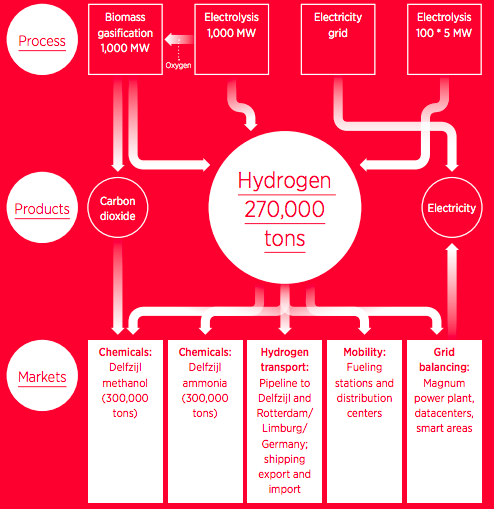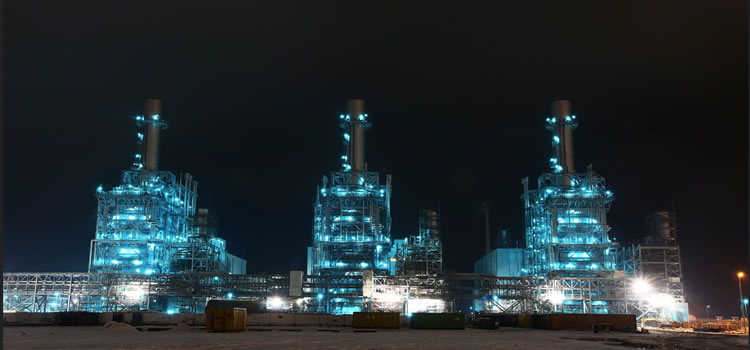The kernel of the story is this: Battolyser B.V. is taking a step forward with the battolyser, its eponymous energy storage technology. On June 12, Battolyser’s joint venture partners Delft University of Technology (TU Delft) and Proton Ventures announced that they had secured a €480,000 grant from Waddenfonds, a Dutch public-sector funding agency, to build a 15 kW/60 kWh version of the battolyser. The installation will take place at Nuon’s Magnum generating station at Eemshaven in the Netherlands. The move makes tangible the vision of the battolyser as an integral part of an energy supply system with a robust quota of renewably generated electricity. The battolyser is a battery that stores electricity in the conventional galvanic manner until it is fully charged. At that point, the device uses any additional electricity supplied for the electrolysis of water and evolution of hydrogen. If the device is integrated with hydrogen buffer storage and an ammonia production train, the result will be a versatile and highly scalable energy storage system that can provide highly responsive grid support on all time scales from seconds to months. (Ammonia Energy last posted on the battolyser on March 1, 2018.)
Content Related to Vattenfall
Article
A Roadmap for The Green Hydrogen Economy in the Northern Netherlands
Trevor Brown June 15, 2018
A number of green ammonia projects have been announced in the Netherlands since the influential Power-to-Ammonia feasibility study was published in early 2017. Perhaps the most important publication since then, however, is the roadmap published by The Northern Netherlands Innovation Board, The Green Hydrogen Economy in the Northern Netherlands. Its scope, including sections written by consultants from ING, Rabobank, and Accenture, goes well beyond the standard techno-economic analysis and presents a cogent plan for coordinated development of "production projects, markets, infrastructure and societal issues." Green ammonia features heavily throughout the roadmap, which calls for the construction of 300,000 tons per year of renewable ammonia production in Delfzijl by 2024, as well as for large-scale imports of green ammonia, starting in 2021, which would provide low-cost delivery and storage of carbon-free fuel, cracked into hydrogen, for the Magnum power plant.
Article
Ammonia for grid-scale power: Nuon, Gasunie, and Statoil
Trevor Brown July 12, 2017
A new collaboration was announced last week, between Dutch power company Nuon, European natural gas pipeline operator Gasunie, and Norwegian oil major Statoil. The joint venture will look at converting one of the Magnum power plant's three 440 MW gasifiers, with hopes to have it running on hydrogen fuel by 2023. This is the continuation of the Power to Ammonia project and, although ammonia is not expected to be used in this particular stage of the project, converting Magnum to hydrogen fuel represents the "intermediate step" to demonstrate that "where hydrogen could be produced using natural gas by 2023, from the year 2030 it could be possible to produce it with sustainably produced ammonia ... Ammonia then effectively serves as a storage medium for hydrogen, making Magnum a super battery."


